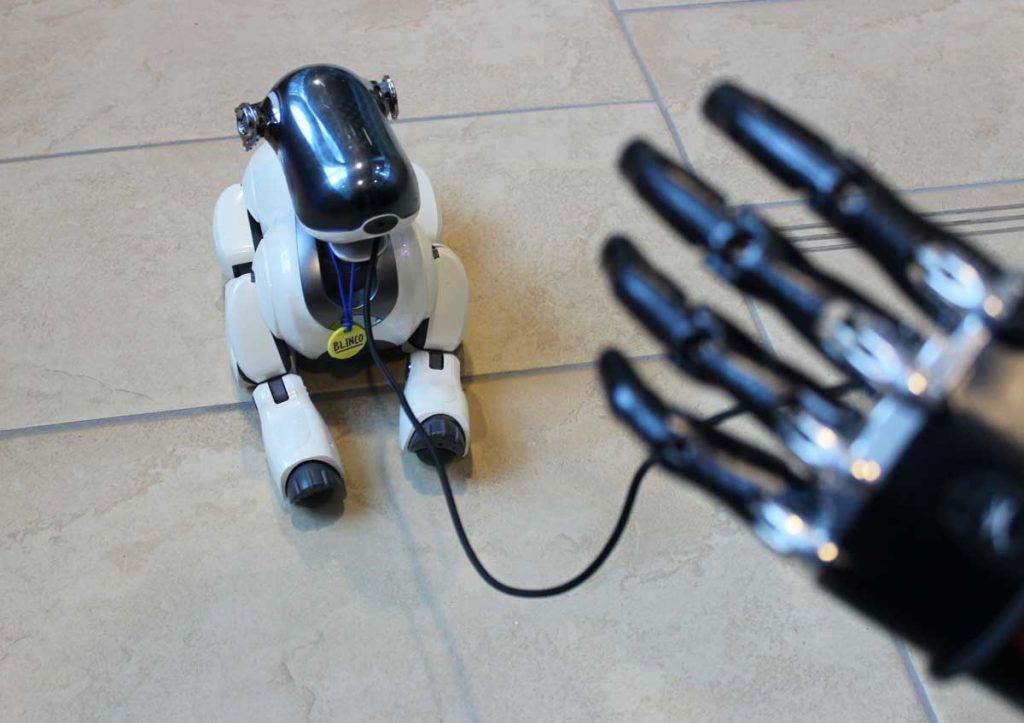Submission 2024
| Submitted by: | Annette Lau |
| Department: | Medicine |
| Faculty: | Rehabilitative Medicine |
This picture symbolizes the intersection of two seemingly unrelated realms: animal training, famously illustrated by Pavlov’s dogs and the modern-day application of machine learning algorithms in powered prosthetics. Surprisingly, there are quite a few similarities between them. Traditionally, prosthetic devices were used as static tools, like how one uses a hammer on a nail. However, recent advancements in machine learning control are reshaping our perception of bionic limbs, framing them as collaborative partners instead. Much like how a guide dog adjusts to their owner’s pace and vice versa, a similar interaction can be seen between a prosthetic device and its user. As a graduate student in Rehabilitation Medicine, my research uses reinforcement learning techniques to make prosthesis control more dynamic and adaptive. Just as your pet dog can be trained to sit with treats, my work explores how prosthetics can learn through positive reinforcement to be a partner rather than a tool in one’s everyday life.
Was your image created using Generative AI?
No.
How was your image created?
Blinco is a robotic dog in our research group, lovingly named as a play on our lab name, Bionic Limbs for Improved Natural Control (BLINC) and Bingo, the dog. Although his battery is dead much like many graduate students, he provides great cheer and morale with his cute demeanour and silly poses. Blinco was originally used to test reinforcement learning algorithms before he was adopted by our lab. I used an electronic cable to emulate a leash and a bionic hand to further exaggerate the parallels between an electronic world and a human world. Overall, taking this picture was a breeze as Blinco did not struggle, squirm, or bark at the Katz building bypassers. What a good boy!

